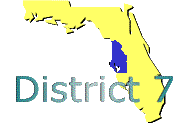| 2.0 | PUBLIC TRANSPORTATION MANAGEMENT |
| 2.1 | PUBLIC TRANSPORTATION MANAGEMENT |
| 2.1.0 | ITS shall include a Public Transportation Management (PTM) function. |
| 2.1.1 | PTM shall include an Operation of Vehicles and Facilities (OVF) function that provides computer assisted control of the operation of vehicles and their associated facilities. |
| 2.1.1.1 | To enable the automation of the vehicle and facilities operations OVF shall provide the capability to gather the needed data to include, but not be limited to, the following: |
| 2.1.1.1(a) | Vehicle passenger loading by bus stop and trip segment. |
| 2.1.1.1(b) | Bus running times between time points. |
| 2.1.1.1(e) | Mileage accumulated by individual buses. |
| 2.1.1.2 | OVF shall include a Command and Control (CC) capability. |
| 2.1.1.2.1 | CC shall provide the capability for real-time Vehicle Command and Control (VCC). |
| 2.1.1.2.1.1 | VCC shall provide the capability to compare received information with predetermined operating condition specifications and note any deviations. |
| 2.1.1.2.4 | CC shall include the capability for its computational capabilities to be located either on-vehicle and/or at remote locations. |
| 2.1.2 | PTM shall include a Planning and Scheduling Services (PSS) function to automate the planning and scheduling of public transit operations. |
| 2.1.2.2 | The PSS shall include a Schedule Generation capability. |
| 2.1.2.2.1 | The PSS Schedule Generation function shall collect that data needed for schedule generation including, but not limited to, the following: |
| 2.1.2.2.1(c) | Revenue information. |
| 2.1.3 | PTM shall include a Personnel Management (PM) function to facilitate the management of both driver and maintenance personnel. |
| 2.1.3.2 | PM shall include a Driver Personnel Management (DPM) function. |
| 2.1.3.2.3 | In generating fair driver assignments DPM shall include factors relating to drivers preferences and qualifications to include, but not be limited to, the following: |
| 2.1.3.2.3(b) | Driver schedule preference. |
| 2.3.0 | ITS shall include a Personalized Public Transit (PPT) function. |
| 2.3.1 | The PPT shall include a Rider Request function. |
| 2.3.1.1 | Rider Request shall provide the capability for an individual rider to request a trip by specifying the trip origin and destination, time and date. |
| 2.3.1.2 | Rider Request shall provide the capability for an individual to specify a rider's special equipment or handling requirements. |
| 2.3.1.3 | Rider Request shall provide the capability to notify a requester of the fact that a trip assignment has been made including the time at which the vehicle is expected at the point of departure. |
| 2.3.2 | The PPT shall include a Vehicle Assignment function. |
| 2.3.2.1 | Vehicle Assignment shall utilize vehicle availability, special requirements and rides requested information to determine vehicle assignments and routing. |
| 2.3.2.10 | Vehicle Assignment shall provide the capability to accommodate immediate trip requests when enough capacity is available for the added rider pickup and delivery. |
| 2.3.2.2 | For Random Route operations Vehicle Assignment shall assign trip origin and destination. |
| 2.3.2.3 | For Flexibly Routed operations Vehicle Assignment shall control how fixed route buses are detoured. |
| 2.3.2.4 | For reservation based random-route operations Vehicle Assignment shall provide the capability to plan routes that optimize vehicle schedules while considering passenger's needs. |
| 2.3.2.5 | Vehicle Assignment shall provide the capability to select the best match between the rider's needs and the available vehicles. |
| 2.3.2.6 | Vehicle Assignment shall provide services to both publicly owned and privately owned, publicly licensed vehicles. |
| 2.3.2.7 | In order to service travelers in low-demand time (e.g., night time and weekends) Vehicle Assignment shall provide services 24 hours per day, 7 days per week. |
| 2.3.2.8 | Vehicle Assignment shall assign vehicle routes within 4 blocks of rider's trip origin point. |
| 2.3.2.9 | Vehicle Assignment shall be a real-time system. |
| 2.3.4 | The PPT shall include an Information Processing function. |
| 2.3.4.2 | Information Processing shall use information to attempt to minimize the amount of time each passenger must ride. |
| 2.3.4.3 | Information Processing shall provide the capability to automate the assignment of drivers to vehicles. |
| | |




